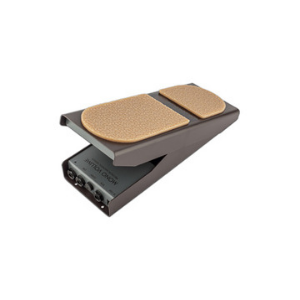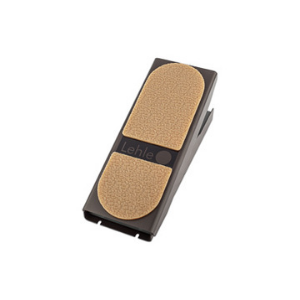- Home
- Instruments
- Gear
- Recording
- Lessons
- Reviews
- Blog


| Controls: |  |
| Features: |  |
| Performance: |  |
| Value: |  |
German outfit Lehle (pronounced like the Eric Clapton classic) may be an unfamiliar name to many players, but their pedals and accessories are some of the most high-end volume and feedback solutions on the market. Their new Mono Volume pedal uses magnets, rather than a potentiometer, to provide better tone and a longer lifespan. Let’s look at why this is undoubtedly one of the best volume pedals around.
 Features
FeaturesThe Mono Volume, like most volume pedals, is dominated by the massive well-gripped footpad in its center. This unit runs using built-in magnets and the Hall effect – a way to measure the strength of magnetic fields – to control your volume.
Lehle claims that this method offers a more precise sweep and a longer lifespan than traditional potentiometer-based volume pedals. At the very least, this pedal does run much more smoothly than others. With just the magnet inside the actual pedal, there’s no component that can really break with repeated use.
Beyond the obvious volume control, this pedal packs a few other hidden features. While it runs off standard 9V power (and can go up to 15V), the pedal internally converts the power into 18V for more headroom and clearer sound. This pedal also packs a 10dB volume boost for solos and extra heavy passages.

Most players will find the controls on this pedal pretty obvious. The footpad adjusts the volume, from -92dB at the furthest back to 0dB (equal with your unaltered signal) at the front. The wide sweep makes pretty much any volume level immediately accessible. Everything else – inputs, outputs, and boost control – is located at the top of the pedal.
Past the input and 10dB boost circuit (adjustable with a dial control) lie two outputs – one is a standard output to the next pedal or to an amp, while the other is a buffered output. That allows players to plug into a tuner, second amp, or directly into a DAW without sacrificing sound quality or adding more things into their signal chain.
It’s true that the Mono Volume offers crystal-clear sound – there’s no top-end loss, which is unusual for a volume pedal, and it avoids any compression or tightening of the tonal spectrum. However, most players will really appreciate this pedal for its fluid operation. Too many volume pedals restrict the volume change to one small part of the sweep, leading to jarring sound changes and endless practice trying to find the ‘sweet spot’ without completely turning off your signal.
Lehle’s Mono Volume, in contrast, is remarkably smooth and well-calibrated. The signal changes pretty steadily from the very back all the way through the front of the pedal. Likewise, it’s easy to keep the volume at half or less of the full signal without spending 30 seconds looking for the spot or choking your tonal range. This pedal works well both for sweeping volume changes and choppier tremolo effects.
The Mono Volume is clearly one of the best – if not THE best – volume pedals around today. It offers a wide sweep range, expressive volume control and durable design that will outlast nearly every other unit on the market.
With that being said, it’s also among the most expensive units out there. Players who can’t live without a volume pedal should certainly check it out, although guitarists just looking for a new effect to have fun with, or exploring how a volume pedal can be used, might want to look elsewhere before spending this much cash.
For more info about the Lehle Mono Volume Pedal, click here.
For more of the best volume pedals, click here.

Reader Interactions